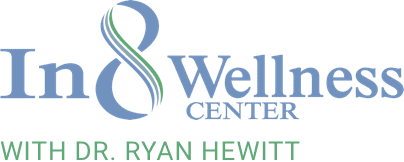5 Mobility Tools That Will Change Your Life (And Your Back)
As a movement professional, former competitive hockey and CrossFit athlete, and avid seeker of my physical limits, I have learned many things about the human body – mostly the hard way! And now at the ripe old age of 37 I’ve accumulated a couple of lower back disc injuries, complete ligament tears, meniscus surgeries, and many more bumps and bruises.
All of these learning opportunities however, one of the most important lessons I have learned about my training is the importance of balance. Not just balance in my life or in different skills and domains of fitness, but literal balance in movement and mechanics. I can trace back most of my recent wear and tear injuries to imbalance causing flawed mechanics in my training.
 Musculo-skeletal balance is essential for quality technique to be applied and coordinated movement to happen. If you look at some of the most beautiful movers in sports like CrossFit, gymnastics, or weight-lifting, you will observe optimal balance in their joint-stacking, core stability, and muscle-recruitment patterns. Obviously, this comes largely from thousands of hours of perfect practice, but for those who excel and manage to stay relatively injury-free they have discovered ways to maintain symmetry and balance in their body.
Musculo-skeletal balance is essential for quality technique to be applied and coordinated movement to happen. If you look at some of the most beautiful movers in sports like CrossFit, gymnastics, or weight-lifting, you will observe optimal balance in their joint-stacking, core stability, and muscle-recruitment patterns. Obviously, this comes largely from thousands of hours of perfect practice, but for those who excel and manage to stay relatively injury-free they have discovered ways to maintain symmetry and balance in their body.
The reality is not all of us are genetically gifted Olympic athletes, and most of us have old injuries and responsibilities that don’t allow us to spend hours in the gym. So, this means that if you want to continue to improve your skills, technique, fitness, and health it becomes even more critical to become aware of imbalances, correct them before they become problems, and continue to hit PR’s!
How do you do this?
First and foremost, if you are acutely aware of imbalances or cumulative injury then get checked by a movement professional. In my clinic, I use a functional screening of 8 specific strength and flexibility tests to screen all of my athletes, and other specialized tests for targeted problems. The typical protocol for movement correction involves joint mobilization, manual or self-soft tissue activation, movement re-patterning, and strengthening.
For every day maintenance and balance however, these are the simple tools that I use:
- Lacrosse ball, soft-ball, or acumobility ball. I use these for targeting trigger-points and neuro-muscular activation. Use these tools especially in the hip and glut regions, mid-back, and rotator cuff areas.
- Foam roller or eclipse roller. I use these for general soft tissue prep or to scan areas for soreness or tight regions. Especially good for mid-back, hips, legs, and calves.
- Rubber floss. I use floss to compress areas that are above or below a problem joint and perform exercises, stretches, or mobility. Especially good for upper, lower leg, and upper, lower arm.
- Kettlebell. I use a 10-20lb kettlebell to increase the pressure when I’m using a device to release a trigger point and do active mobility, or I apply the handle directly to a body part that I want to mobilize. This especially useful for the groin region or psoas.
- Hip circle or small resistance band. This tool is useful for applying resistance to any movements that you are trying to re-pattern like the hips, glutes, or middle back. Also great to use while mobilizing to recruit more muscle fibers like the calf/soleus area while foam rolling the lower leg.
Look for instructional videos for specific movement protocol corrections coming soon!
